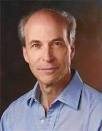In the last blog, we discuss the three Nobel Prize winners in2005. Here I will continue to introduce the winner in 2006. The only winner---Roger David Kornberg in chemistry
Roger David kornberg
Roger David kornberg, an American chemist, is a professor of structural biology at Stanford University School of Medicine. He was born to a biochemist family, his father---Arthue Kornberg, who won the Nobel Prize, and his mother---Sylvy Ruth, who was a chemist. He also has two younger brothers, who are also excellent biochemists.
In 1967, he obtained his bachelor’s degree in chemistry from Harvard University and in 1972 he earned his Ph.D from Stanford University. Before stepping into his present position---a professor of structural biology at Stanford University in 1978, he was a postdoctoral fellow at the Laboratory of Molecular Biology in Cambridge, England. Then in 1976 he became an Assistant Professor of Biological Chemistry at Harvard Medical School. After that he married Professor Yahli Lorch, who was his collaborator.
All organisms are under control of their genes coded by DNA, which is copied to RNA creating proteins, which are sequences of amino acids. DNA, which resides in the nucleus, copies that gene’s Dna sequence onto a messenger RNA sequence, when a cell expresses a gene. mRNA is transported out of the nucleus to ribosomes, which read the mRNA and translate the code into the right amino acid sequence in order to make that gene’s protein.
With the help of many other proteins, the DNA is transcribed to mRNA by an enzyme called RNA polymerase II, which is widely used to in all organisms with nuclei to transcribe DNA and humans are included. Kornber determined the role of RNA polymerase II and other proteins in transcribing DNA by taking advantage of yeast. What’s more, he used X-ray crystallography to create three-dimensional images of protein.
Kornberg and his research group have made several basic discoveries about the mechanisms and regulation of eukaryotic transcription. Later, at Stanford they had made the progress from baker’s yeast in the development of a faithful transcription system. The baker’s yeast is a simple unicellular eukaryote. They used this to isolate in a purified form all of the several dozen proteins required for the transcription process.
Kornberg discovered that transmission of gene regulatory signals by using this system. This is the reason why he could be awarded Nobel Prize.

WONDERFUL Post.thanks for share..more wait .. …